Miners first put Yukon on the map. During the Klondike Gold Rush of 1896, they trekked over the mountains from Alaska, first to Whitehorse then to Dawson City - they're still digging out nuggets.
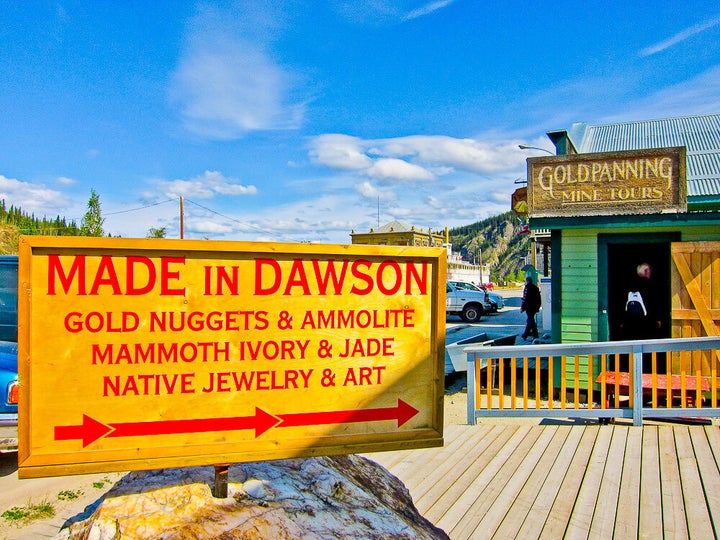
As you fly across the mountains into Whitehorse you see the scars on the landscape caused by over a century of mining. The town is named after the rapids, south of the centre, that were said to resemble white horses and it's the highest navigable point on the Yukon river. In 1896 thousands of prospectors made their way here, across the Chilkoot and White passes from Alaska, before taking the steamship to Dawson.
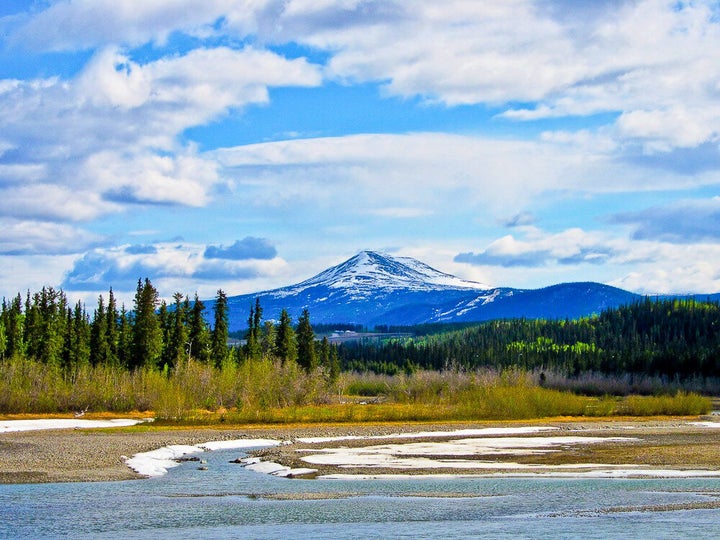
In 1953 Whitehorse became the capital of the Yukon and its population now numbers around 27,000, although the city limits extend to a 50 km radius. Indeed there are only just under 36,000 in the whole of the Yukon - they say there's a Grizzly for every family, or 6 Caribou to every person. These days the town sprawls along the banks of the river, surrounded by snow-capped mountains, and, surprisingly, it's Canada's driest city.

For a place that spends a large proportion of the year under snow, it's surprisingly attractive. Pubs, coffee shops, restaurants and hotels line the streets and you can hike or bike the local trails, go fishing on one of many well-stocked lakes, or paddle the famous Yukon River. 30 minutes north of the town are the natural mineral waters of Takhini Hotsprings, ideal for relaxing while enjoying great views of the surrounding mountains.
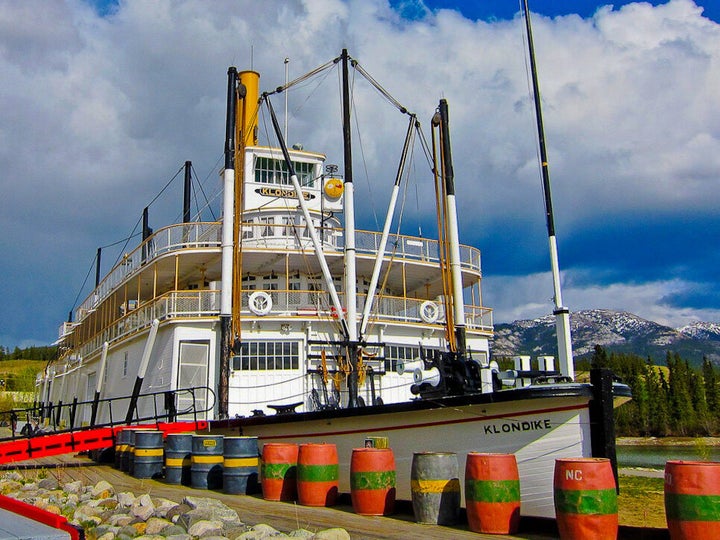
Of course, as you'd expect, there's plenty of gold rush history. The preserved paddle steamer S.S. Klondike is open to visitors and there are hour long walking tours of downtown led by guides from the Yukon Historical and Museums Association. You can take a cruise down Miles Canyon, following the footsteps of the '98 Gold Rush stampeders as they navigated the formidable obstacles of the Yukon River rapids or visit the McBride Museum.
In late May the ice has just disappeared from the river and the weather is bright and sunny, pleasantly warm enough to go around in shirt sleeves. You do get the impression that people make up for the long hard winters by partying harder in the summer and there's plenty of night life to keep me occupied. Because Whitehorse is so far north, it never really gets dark. You find yourself getting thrown out of the pub when it's still light outside, thinking it's still early - well that's my excuse, anyway...
Dawson City
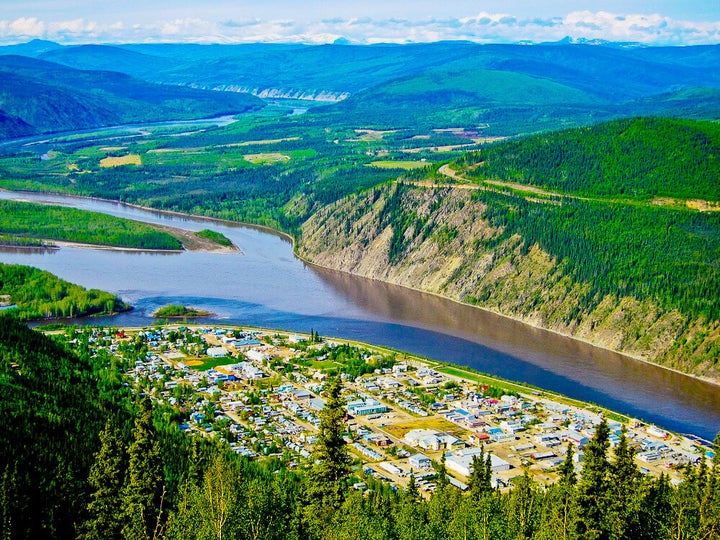
I first get the sense that I am stepping back in time when I board the Air North flight at Whitehorse. Not only is the plane, an HS748, a relic from the '60's but there's no security check at the boarding gate. It's just over an hour's flight to Dawson City and Bonanza Creek, the place where gold was first discovered in 1896, and it's a delightful sunny morning. Stills and film footage from that era always emphasise the harshness of the snow and ice but today it feels like an undiscovered paradise in this northern wilderness.
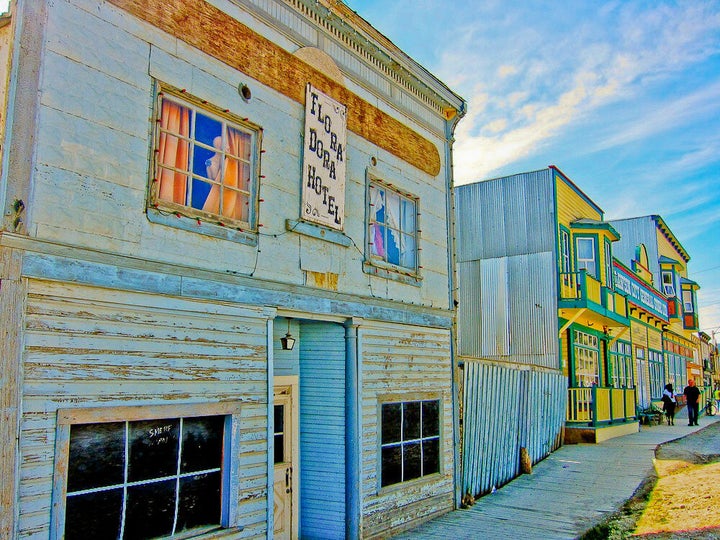
Dawson City is situated at the confluence of the Yukon and Klondike rivers and the riverfront is the focus. The Klondike gold rush started here and the town now has shrunk to 30,000 at its peak to less than 2000 today. I've visited other gold mining towns in the US and New Zealand in the past and they always feel over-restored and rather twee. Dawson feels the opposite, immaculate restored buildings sitting side by side with those crumbling into decay. Indeed, with the price of gold on the increase, miners are back to work the old seams. It's still not quite back to the old days, but the town really does seem to have a new lease of life.
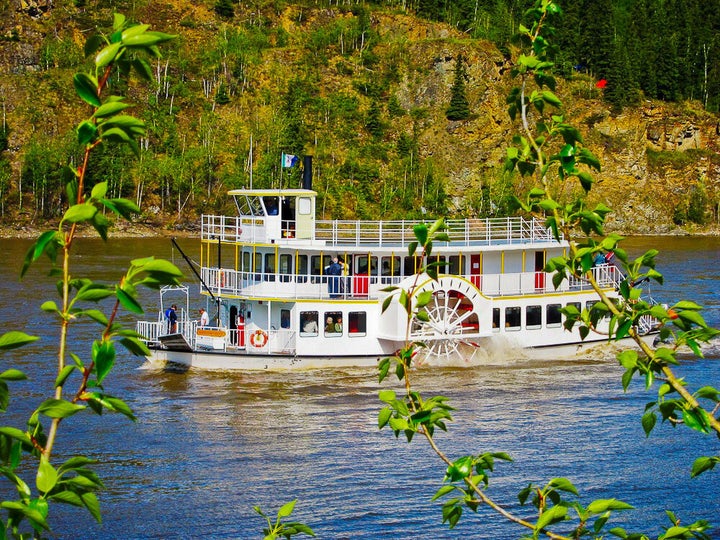
There's a paddle boat offering trips on the river and you can pan for gold on Claim #6 in Bonanza Cree, the site of the original find and get to keep any nuggets you find. In the centre of town is the newly Dänojà Zho Cultural Centre which tells the story of the native American Tr'ondëk Hwëch'in who, of course, were here long before the gold prospectors turned up. The Dawson City museum has a large collection of artefacts relating to the Klondikers and they've even moved Jack London's cabin to a street where Robert Service and Pierre Berton once lived.
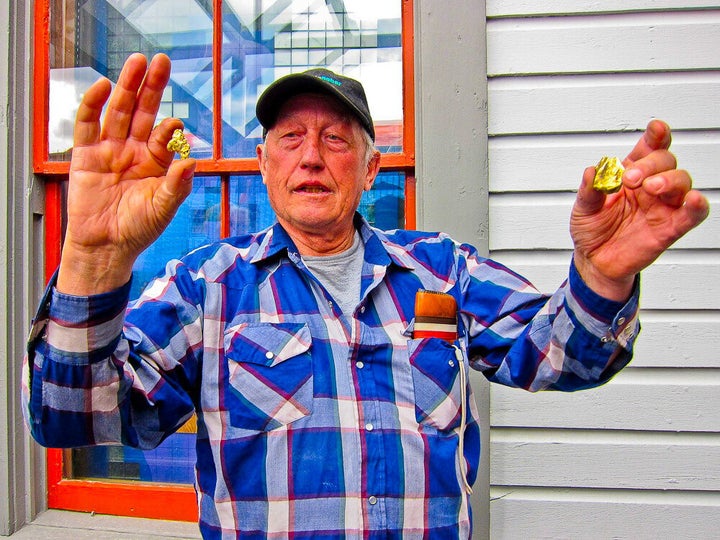
In the museum I run into Jim Cochrane, an old timer, who's had claims around Dawson for the last 60 years. I suspect he's made many fortunes and lost them all during his long life and he's full of stories about his encounters with Grizzlies. Suddenly he pulls out of his pocket a small pouch crammed with gold nuggets and passes me a small example to hold. The total street value of what he's carrying is around $23000 so who knows what he's got stashed under his bed back home. There's obviously still gold in them there hills...
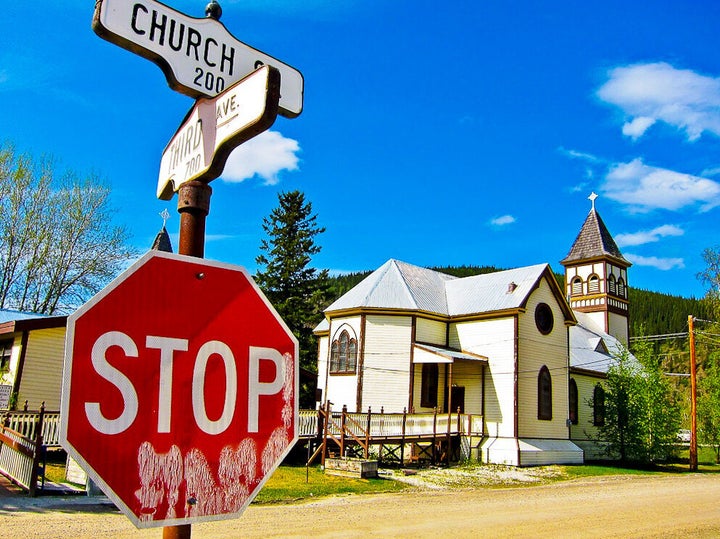
Travel Yukon has information about the region.
Canada Travel has information about the country.
For a free copy of the Yukon Visitor Guide email Travel Yukon UK.
Air North flies daily to Whitehorse and Dawson City from Vancouver.
The Independent Traveller, Destination Canada, has a 14 day fly drive departing in May starting at £2279 per person based on 2 people sharing. The cost covers flights with Air Canada from LHR to Whitehorse, 14 days car hire and 14 nights hotel, on a room only basis.
All pictures copyright Rupert Parker.